The Gist
- Agile isn’t one-size-fits-all. Success depends on mindset and culture, not just rituals like standups or Kanban boards.
- Capacity and feedback are keys to sustainability. Teams should stay within 60–80% workload and use retrospectives and conversations to adjust.
- Continuous improvement must be intentional. High-performing Agile teams proactively optimize processes before they break down.
At the most fundamental level, Agile is straightforward: it’s about doing the right work at the right time to get better results without extra effort. Unfortunately, many teams struggle to translate Agile rituals and practices like standups and Kanban boards into tangible results. They feel like they’re “doing all the Agile things” without getting the benefits.
Here, we’ll break down the simple concepts you need to know to nail your Agile implementation and start seeing serious results.
Table of Contents
Moving Beyond Buzzwords & Blindly Following Rituals
Here’s a secret, when it comes to Agile, the reason you do things is just as important as the actual practices you employ.
That’s because Agile isn’t one thing; no two team’s implementations are going to be identical. Instead of just learning about Agile rituals and doing them, you need to invest in building the right mindset and culture.
After all, every Agile team has to make countless decisions each week about how they will adapt Agile principles to their daily realities.
Should you prioritize your work backlog or assume the order of importance is the same in order to save some time?
Should you skip standups when everyone is really busy?
These are the moments when Agile can either start to break down or thrive. Culture and mindset are what determine which direction your team will go.
Related Article: How an Agile Marketing Process Makes Good Marketing Teams Great
Building an Agile Mindset and Culture
When leaders want to invest in culture, too often that just means holding some training sessions. But real culture and mindset shifts require more than that. The 70 20 10 rule is a good way to think about it.
About 10% of your time and effort should go into formal Agile training. Another 20% should focus on working with subject matter experts like coaches. But the remaining 70% is all about applying all those learnings to your actual work.
In other words, while some training and coaching is valuable, most of your attention has to be on taking all that theory and figuring out how to adapt it to your actual situation.
Agile Practices vs. Outcomes
Editor’s note: This summary highlights which Agile components drive measurable value — and which may fall short without the right mindset.
| Agile Element | What It Does | When It Works |
|---|---|---|
| Daily Standups | Foster alignment and quick blockers resolution | When paired with psychological safety and open dialogue |
| Kanban Boards | Visualize workflow and manage progress | When tied to team priorities and clear ownership |
| Capacity Planning | Prevents overloading and burnout | When workload targets are realistically set at 60–80% |
| Retrospectives | Enable team reflection and improvement | When feedback leads to real process change |
| Agile Mindset | Drives adaptability and experimentation | When leaders model and reinforce cultural norms |
Unlocking Sustainable Progress
Without a doubt, investing in building an actual Agile culture amongst your team is the best path to Agile success. But Agile is also about continuous improvement, so simply saying “well we finished that step so now we just sit back and enjoy the results” is only going to lead to regression.
So what can you do to ensure your Agile teams continue to build on their progress and improve with time while also avoiding burnout?
Managing Capacity
The first step is using estimation and capacity planning to ensure your teams have a reasonable workload, along with excess capacity in case of emergencies.
This means employing a rigorous and systematic approach to measuring your workload before a set period of work (like a sprint if you use them), and ensuring your team members are between 60-80% capacity instead of striving for 100%.
After each sprint, use retrospectives to gather feedback on how it went and ask each individual team member how their workload was.
Establishing Feedback Loops
Regularly talking with team members to hear about what’s working, what isn’t, and how they’re feeling is a crucial way to spot issues early. This helps create vital feedback loops to help teams improve over time.
So, for example, instead of letting one person work themselves until they quit, there are early opportunities to flag that they’re overworked.
Importantly, all of this is about far more than the meetings. These practices are another way to build that Agile mindset and culture over time.
Team members see and experience that leaders ask them for feedback and insights into how the team is functioning. That feedback is then turned into real action as teams experiment to find ways to improve.
Continuous Improvement
Alongside managing capacity and utilizing feedback loops, long-term Agile success requires managing processes to foster continuous improvement. No process will work well forever; the world of marketing changes far too quickly for that to happen.
Instead, teams have to regularly look at their processes and identify areas for improvement.
Then, teams can use data-driven experiments to test ideas around improving those processes.
Non-Agile teams do this as well, but the difference is in the habit and intent. Instead of waiting until a process is beyond broken to attempt a fix, Agile teams should be more proactive.
By framing this as looking for ways to improve instead of simply problems to fix, Agile teams can harness continuous improvement and really get ahead of their competitors.
Your Path Forward for Agile
If your team is following Agile rituals and practices but wondering why you’re not seeing the benefits you expected, it’s time to pause and reevaluate. Continuing on that path can easily create frustration around Agile that can make it nearly impossible to successfully implement.
Instead, equipping your teams with the resources they need for success is essential. From there, use strategies like capacity planning and prioritization to ensure your teams are doing the right work instead of overburdening themselves.
Lastly, ensure you’re using feedback loops to continuously improve, testing new ideas and constantly building on the progress you’ve made. Together, these strategies can get you back on track towards sustainable Agile success.
Core Questions About Agile Implementation
Editor’s note: Essential questions to ask when Agile practices aren’t delivering the expected results — and what to shift to get real value.
Learn how you can join our contributor community.






